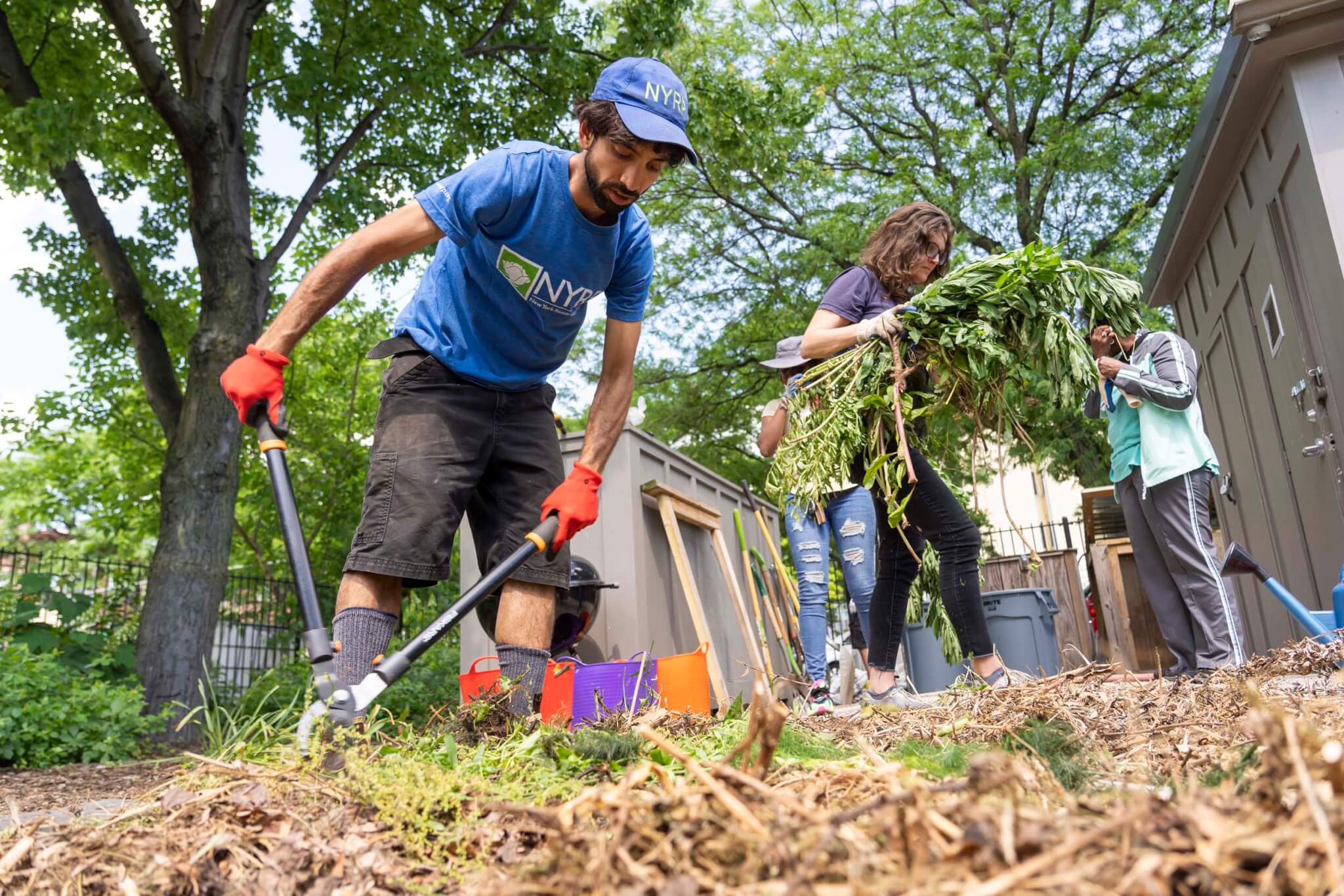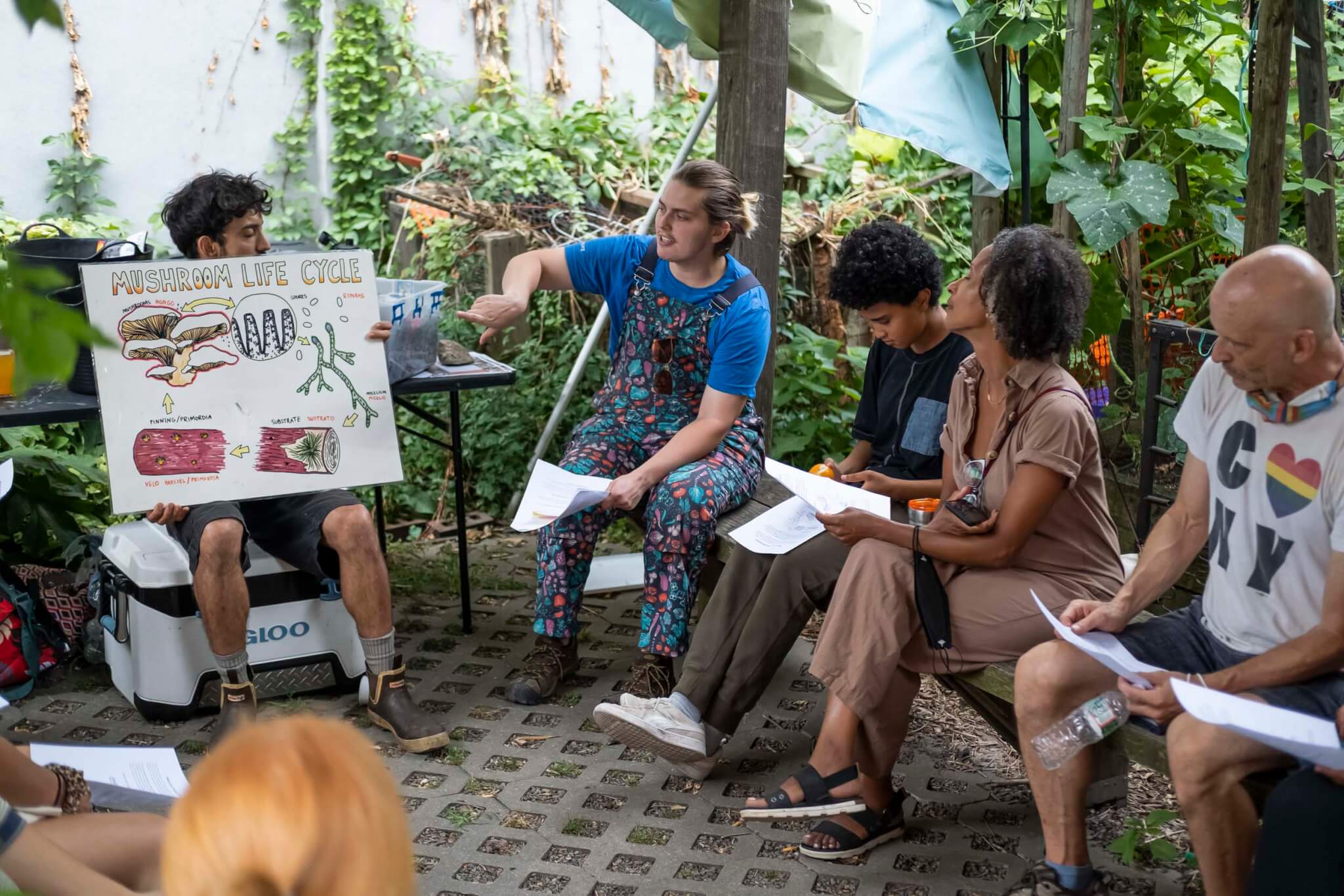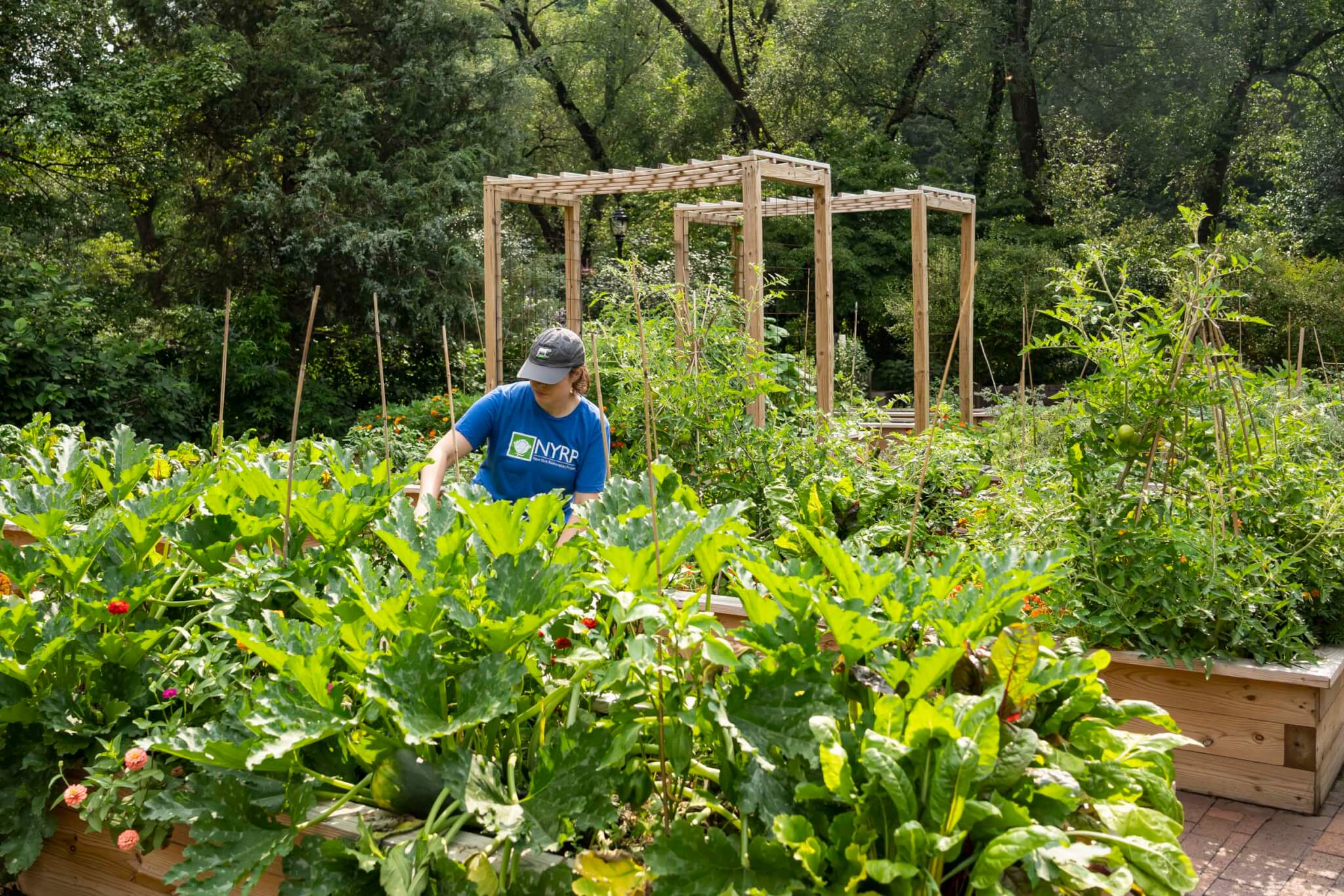Urban agriculture encompasses community gardens cultivated by volunteers as well as vast greenhouse and rooftop farms that sell their products to grocery stores across the country. The concept of food production in urban areas has gained visibility in recent years in tandem with discussions of food insecurity, climate resilience, and equitable access to green space, but the challenge of understanding and representing such a diverse range of stakeholders persists.
In 2021, New York City established the Mayor’s Office of Urban Agriculture (MOUA). The stated goal of the office is to create an unprecedented “strategic and equitable plan for urban agriculture and policy for New York City.” While MOUA’s first plan is slated for publication this fall, those involved in gardening and farming in the city already have ideas for how new policies could better support their work.

Gil Lopez, one of the 11 gardeners behind Smiling Hogshead Ranch, knows that the cost of land is a major barrier to growing affordable food at scale in the city. “There’s no agricultural zoning in New York City,” he said, but went on to propose an idea: “If a building hosting an urban agriculture project could get a portion of their tax reduced because some percentage of their property is zoned agricultural, and those savings were passed directly on to the farmer and not to the developer or building owner, farming could be more affordable.” He also believes that existing sustainability measures could be leveraged to encourage agriculture: “New York City has mandated that new buildings over a certain size have to have a solar or green roof. If we could make these food-producing places, we could really start moving the needle on this.”
On a grassroots scale, Lopez believes that reclaiming the commons is a critical start. “It’s important to encourage designers to design spaces that incorporate food production, but the onus doesn’t end with the designer. The management of the space must be taken into account.” Growing or foraging edible foods in NYC Parks & Recreation–managed public space is currently illegal. The Bronx River Foodway is a pilot program that operates in exception to this rule and has allowed public foraging since 2017 to great success. Lopez and others believe that foraging restrictions are evidence of the racist and classist systems that have produced and perpetuated food deserts and widespread food insecurity. Architects and designers could be change-makers in this realm. Lopez included a call to action in our conversation: “I think it’s important for designers to weigh in on these things legislatively and to be advocates.”

What would positive change look like at the scale of the community garden? Founding members of El Jardin del Paraiso Bonnie Stein and Annalee “Annie” Sinclair hope for streamlined communication channels between city agencies and community gardens. El Jardin del Paraiso relies on GreenThumb, the community-garden arm of NYC Parks, to provide essential services. Stein and Sinclair hope that the increased awareness of the importance of urban agriculture will increase funding for GreenThumb, a program they say is stretched thin across the more than 550 community gardens in its jurisdiction. “A lot of things only happen because of an emergency,” said Stein. Sinclair cited a nine-year stretch in which El Jardin del Paraiso lost water access after a grant to upgrade an in-ground water source went awry: Communications broke down between the city and the gardeners.
Irrigation and the availability of water are common problems for volunteer-run spaces. Community gardeners across the city have called for support in developing sustainable irrigation systems. “It would be ideal if every space could have some type of in-ground water system that taps into city water lines,” said Corey Blant, deputy director of urban agriculture at New York Restoration Project (NYRP), a nonprofit organization that supports public green space and community gardens across New York City. NYRP launched its Urban Agriculture program in 2020 in response to the desires of urban gardeners hoping to grow more food. He noted that many community gardens rely on city fire hydrants and rain catchment systems for their irrigation, making them vulnerable to droughts.

Anthony Reuter, assistant director for planning and programs at NYC Parks GreenThumb, told me about the precarity that community gardens have faced in the past. For decades, many of these pocket green spaces have depended upon the support of the presiding mayoral administration for protection from development—with mixed results. Reuter assured current members that their gardens were safe as long as they were actively used. However, he acknowledged that the aging leadership of many historic community gardens can be worrying: “We need to identify young people who will keep these spaces going. If you love being in the gardens, join them. These are volunteer-run spaces that only exist if people are involved.”
Sinclair echoed this sentiment, replying, “People want to be stewards of their own piece of land. The best part of having this place is seeing people in it.”
Melody Stein is the founder of studio VISIT, a creative practice for land-based research. She is also a visiting assistant professor of landscape architecture at the Pratt Institute and a 2023 Forefront Fellow at Urban Design Forum.











